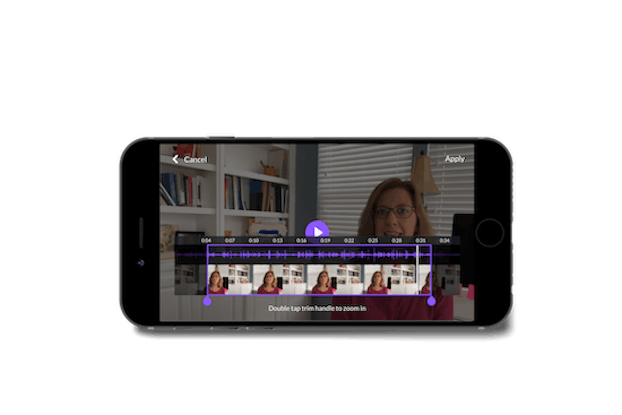
Monster.com was once the nation’s leading job-search site, until it wasn’t.
The company, which fetes its 25thanniversary this year, ceded market share to rivals from LinkedIn to job-board aggregators like Indeed.com — but not because competitors were out-innovating the site, among the first dot-coms to place print classified ads online, said Scott Gutz, chief executive officer of Monster.com.
Quite the contrary, he said. In the talent acquisition space, “there’s not been a lot of disruption and dramatic change over a 25-year period.” Employers still place job ads online, and candidates answer them, with little change to the process, he said.
Monster’s downturn instead reflects its own failure to innovate while “competitors started to capture market share from a natural-evolution perspective,” he told CO—.
Now Gutz, named CEO in May 2018, is plotting a comeback pegged to culling more nuanced insights on what’s motivating job seekers’ pursuits beyond resumé talking points — factors like company culture or long-term career goals — by leveraging technology such as artificial intelligence and machine learning.
Key to that strategy is the rollout of new tech-driven features such as a revamped “onboarding” process that includes new job search filters and questionnaires that take a page from dating apps and online shopping sites to deliver candidates more personalized ads, while a new Monster Studios app brings job ads to life via employers’ video testimonials.
“We are constantly evolving our Monster technology stack so that we can build out machine learning and artificial intelligence algorithms” to find more relevant jobs for seekers, and ultimately, more targeted candidates for employers, Gutz said. “We hope to be the innovator behind those important changes.”
We want to bring these solutions to candidates and employers where they already are, using technology they not only expect, but often demand.Scott Gutz, CEO, Monster.com
Innovate
Monster.com has adapted in the face of massive disruption in how companies recruit and hire. Has your company adopted more innovative hiring methods?
The strategy by Monster, owned by global staffing firm Randstad, echoes marked pivots in how people consume content including millennials, now the largest demographic cohort in the U.S. workforce.
“In the past 10 years, there’s been a shift in how candidates consume content — driven largely by the millennial perspective — with their different approach to viewing content, finding jobs, the rise of video, social, etc.,” Gutz said.
“We cover all age ranges. However, at Monster, we think there's an opportunity to serve a younger, more diverse population of people in the 18-to-34 age range — a group we’ve dubbed ‘Generation M,'" he said. “They work in in-demand fields like manufacturing, nursing, logistics and entry-level tech. So, we’ve shifted our focus to helping them not just find any job but find the right job that fits their lifestyle.”
An industry disrupted
Monster's emphasis on helping workers find jobs that uniquely suit them reflects a renewed focus on the candidate in the job seeker/employer equation, which ends up being a win for both sides of a two-sided marketplace, Gutz said. “By having more candidates searching our site, we have more employers posting jobs on our site.”
That strategy makes particular sense now, said John Nurthen, executive director of global research for Staffing Industry Analysts (SIA). “Monster’s focus on candidates is sensible given skills shortages that are expected to get worse, as the global workforce ages and ongoing automation radically changes the skills profile of many jobs,” he told CO—.
The company’s employee-first strategy had long been a competitive edge, but over time, “Monster really started to lose focus relative to the candidates,” Gutz said. “We stopped innovating at a point in time, and grew stagnant [when] we were the dominant player in the space.”
In the $22 billion global online job advertising market, Monster’s revenues have declined 46% since 2014, according to SIA data. Among the top eight online job boards worldwide, it ranks eighth, with LinkedIn taking the top spot and Recruit Holdings, parent of sites including Indeed and Glassdoor.com, behind it at number two, SIA data shows.
The job board playing field started to change in palpable ways in the early 2000s.
Job aggregators like Indeed and SimplyHired, founded in 2004 and 2003, respectively, and professional network LinkedIn, which bowed in 2002, began to eat into Monster’s market share, said Brian Delle Donne, president of Talent Tech Labs, a talent acquisition technology firm.
When LinkedIn, owned by Microsoft, diversified into a professional social network with LinkedIn Recruiter job listings, it started to amass “a natural advertising lead,” he said. For one, job seekers tend to keep their LinkedIn profiles current and robust, which is a lure for employers placing ads on the site.
But it was the job-board aggregators, which cull listings from other sites, that really changed the game, and now Google is tiptoeing into the act.
For Monster, “the big issue is competing with the job aggregators … which command the market,” Delle Donne told CO—. There’s been a “gold rush” of traffic to these sites, he said. “If they go to Indeed, they’re not going to Monster or CareerBuilder. It’s very hard to outdo the role the aggregators have acquired, and now Google is the next big name to step into the aggregator pool.”
As Gutz sees it, Monster, not unlike IBM, is in part grappling with an image issue: A yesterday’s-technology whiff circles both brands. “One of the things we have to overcome at Monster is, as we’ve been around for 25 years, [we’re at times] associated with the old Internet,” he said. So “we’ve refreshed our brand.”
Features like the Monster Studios app, designed to offer candidates a front-row seat to the demands of a particular job, reflect efforts to carve a new niche in the talent acquisition space.
The mobile app gives recruiters the tools to record, edit and publish videos to Monster Job ads in just minutes, the company says. Monster hopes the solution will forge a deeper connection with candidates, particularly as video is stickier than text-only ads. Candidates spend 2.6 times more on pages with video than those without it, according to Monster, citing data from Wistia.
“We know that younger job seekers … are used to digesting their information via video,” Gutz said. “It’s why we believe so strongly in solutions like Monster Studios. We want to bring these solutions to candidates and employers where they already are, using technology they not only expect, but often demand.”
The company theorizes that the authentic flavor of the videos made by actual employees will engender trust and loyalty in its brand among job seekers, as is often the case with user-generated content (UCG). Monster sees these testimonials as a way to build credibility with job seekers, citing a Forrester Research statistic that 50% of people polled said UGC is more trusted than other media.
According to SIA’s Nurthen, Monster Studios taps into two key trends: “The use of mobile apps by a younger generation of job seekers, and the need for organizations to maximize their employer brand to attract good candidates in a tight labor market.”

A digital career coach
In a bid to be a go-to destination for candidates as they change jobs throughout their work lives, Monster is assuming the role of a digital career coach of sorts by reimagining its onboarding process to better align with modern consumers’ behaviors and expectations, particularly as millennials cycle through jobs every two to three years, Gutz said.
In addition to serving up content like career advice tips and free resumé assessment, Monster is working on the rollout of a “unique” onboarding process that goes beyond candidates’ education and job experience, he said, culling untapped data points that consider the impetus for a job change; candidates’ idiosyncratic interests; the stage of their career journey; and long-term professional goals, he said.
The onboarding revamp takes a cue from how consumers today shop for a dress to a date online.
To create a more effective and relevant mobile experience that reflects young audiences’ digital habits, Monster created an online job swipe view as an alternative to the traditional list view to match the preferred way that digital daters, for one, search on mobile today.
The site navigation journey also echoes browsing a consumer e-commerce platform like Amazon, Gutz said. “You’re able to filter the results by a host of options and categories. We want to bring that level of detail to the online job search experience,” he said.
Still in the nascent stages, Monster envisions an onboarding process whereby users are asked a variety of questions like, “What would you like your next role to be? “Where do you want to work?” “How much would you ideally like to earn, salary or hourly?” What do you value in a company?” “What are your goals for your next job?”
Monster is tapping artificial intelligence and machine learning to turn these questions and candidate data points into more relevant and personalized interactions with job seekers that were not possible before, by analyzing candidates’ behaviors to better understand their intent and goals. With this insight, the site will better match candidates with relevant roles, maximizing outcomes for both job seekers and employers, Gutz said.
The company foresees the platform offering candidates informed career recommendations. For example, the site might suggest that a job seeker who aspires to become a chief marketing officer earn an MBA first.
Or Monster might alert a college graduate with a math degree seeking engineering jobs to consider another path — enhance that degree with a data-scientist course and then apply to data-analyst jobs that pay around 20% more, Gutz said.
It all adds up to “our new way of thinking,” he said. “We want to have the tools and solutions for candidates over the entire course of their career journey.”
CO— aims to bring you inspiration from leading respected experts. However, before making any business decision, you should consult a professional who can advise you based on your individual situation.
CO—is committed to helping you start, run and grow your small business. Learn more about the benefits of small business membership in the U.S. Chamber of Commerce, here.







